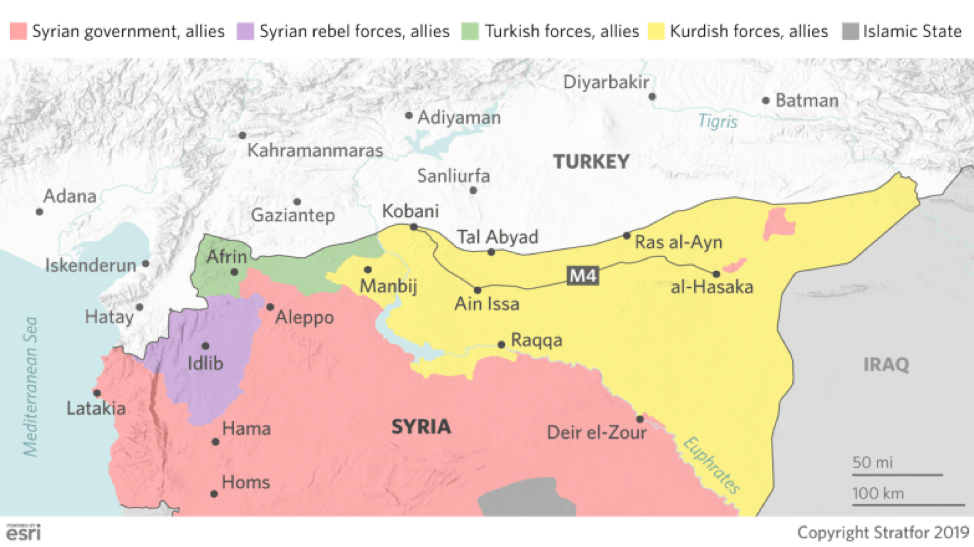- Hassan Diab, who is set to become Lebanon’s new prime minister, will not overcome the country’s political, economic or security challenges.
- Prolonged political paralysis will heighten Lebanon’s economic crisis, and potentially spark violence as major factions like Hezbollah struggle to hold onto power.
- Heightened tensions between the United States and Iran could also lead to more sanctions on Lebanon, or even to open conflict there.
Lebanon’s new candidate for prime minister, Hassan Diab, stands little chance of breaking Lebanon’s political deadlock. And he will face even greater challenges than political paralysis, such as a worsening economic crisis and security crises as Hezbollah turns to stronger tactics to maintain its influence and as the chances grow of a U.S.-Iran regional conflict that could draw in Lebanon.
The Big PictureLebanon is engulfed in political paralysis and economic crisis, and its prime minister candidate, Hassan Diab, will not have many ways to overcome either. As the economy worsens, Lebanon’s security situation will become even more precarious. Meanwhile, rising tensions between Iran and the United States could spark a conflict that brings a regional war to Lebanon itself.
Daunting Prospects for Domestic or Foreign Support
Diab, who is set to succeed longtime Prime Minister Saad al-Hariri as prime minister, will face substantial hurdles. These include winning the support of a protest movement that will not accept a prime minister with ties to the establishment, which they blame for Lebanon’s economic crisis and long-standing corruption. They also include simultaneously winning the support of either the country’s March 8 alliance, to which Hezbollah belongs, or the March 14 alliance, to which al-Hariri’s Future Movement belongs. To maintain the support of either of the alliances, Lebanese prime ministers must dole out state support to them and their adherents. But it is precisely that sort of insider activity that is motivating protesters to take to the streets. Protests have helped accelerate Lebanon’s economic crisis by disrupting the economy, driving away tourists and causing capital flight. By pleasing either protesters or politicians, a prime minister angers the other, making it much harder to govern. At the same time that securing domestic support will prove daunting, foreign support will be harder to find. Lebanese prime ministers have often been able to govern thanks to foreign largesse. That support, which in the past has taken the form of direct U.S. or French aid and favorable bond purchases from Gulf Arab states, has allowed the government to spend lavishly to keep its own supporters happy, often through providing government jobs or favorable contracts. But foreign benefactors have become unwilling to grant Lebanon new aid unless it enacts austerity measures, a requirement that would cut the funds the government needs to maintain patronage networks.
Few Good Options for Politicians
Lebanon’s government and political insiders have little recourse. They cannot rally protest movements against their political enemies, like the March 8 and March 14 alliances did in 2005 after Prime Minister Rafik Hariri’s slaying created a political crisis. Today, with the bulk of the protesters angry at all political parties, the alliances don’t have the same rallying power. Beirut can’t increase spending to alleviate the country’s economic woes either, given the drop in foreign aid, the government’s indebtedness and its dwindling foreign reserves. Diab is not immune to these challenges. Though a relatively apolitical Sunni, he faces strong resistance from the protest movement in large part because he’s seen as too close to Hezbollah — and therefore as too much of a political insider. He also lacks the kind of foreign allies to tap for aid that al-Hariri had, though even if Diab did ask, aid would probably not be forthcoming anyway. He is therefore likely to struggle to accomplish much once in office, and may not stay there long. But even obtaining and exercising power effectively would still not solve three other major problems bedeviling the country: the economy, Hezbollah and potential U.S.-Iranian conflict.The Economy, Hezbollah and U.S.-Iranian Conflict
Lebanon’s deeply unstable economy is worsening. Some major Lebanese bonds are due as early as March, and foreign exchange reserves, a bulwark the country had built up in case of a crisis, are strained by a combination of U.S. banking sanctions aimed at Hezbollah and the deteriorating economy. The United States has broken with its previous policy by bringing sanctions against Lebanese banks and upsetting the country’s delicate internal balance. In 2020, it is likely to seek to further sanction Hezbollah — and by extension Lebanon’s economy, since Hezbollah is entangled with much of Lebanon’s business. These sanctions would worsen Lebanon’s economic situation and complicate any potential foreign bailouts. The longer the economic crisis goes on, the more likely Lebanon is to run short of basic goods and be unable to pay state worker salaries, issues that will impact all sects and political parties. That will weaken the insiders’ hold on their old loyalists and strengthen the protest movement. In a bid to salvage whatever legitimacy they can, Lebanon’s factions — especially Hezbollah — will pivot from financial incentives to physical intimidation, potentially sparking a civil crisis. Hezbollah and its allies would prefer to avoid civil conflict, but they do not want to lose their gains from the May 2018 election, when a Hezbollah ally became the country’s health minister, giving him significant patronage powers. They also do not want to see the emergence of a less sectarian Lebanon, since this could cause voters in Hezbollah turf to consider backing another party. To prevent this outcome, Hezbollah has already sought to cow Shiites into not participating in protests.Hezbollah will not purposefully stoke a civil conflict lest things get out of hand, but its increased use of physical intimidation may spawn one anyway.
But while Hezbollah will not purposefully stoke a civil conflict lest things get out of hand, its increased use of physical intimidation may spawn one anyway, by setting up potential clashes between Hezbollah and protesters, the Lebanese army or other armed political factions. Any ensuing confrontations could eventually spark civil conflict. If that happens, foreigners are likely to get involved. The Americans, the Israelis, the Iranians, the Gulf Arabs and even the Syrians, Russians, and Turks all have an interest in shaping the country’s security situation. Meanwhile, no Lebanese faction has the power to stop the U.S.-Iran conflict, the ramifications of which could hit Lebanon, whether via sanctions or outright military conflict. Should this come to pass, Lebanese political paralysis would get even worse, while the country would face an economic and security crisis unlike anything since its 2006 war with Israel. Moreover, Hezbollah, Tehran’s most capable proxy, could find itself as the spearhead of Iranian retaliation against Israeli or American targets. Doing so, however, would invite a massive Israeli and/or U.S. response in Lebanon. And a military conflict of that scale would usher in yet another troubling chapter in Lebanon’s crisis-ridden history.
 As the world’s leading geopolitical intelligence platform, Stratfor brings global events into valuable perspective, empowering businesses, governments and individuals to more confidently navigate their way through an increasingly complex international environment. Stratfor is an official partner of the Affiliate Network.
As the world’s leading geopolitical intelligence platform, Stratfor brings global events into valuable perspective, empowering businesses, governments and individuals to more confidently navigate their way through an increasingly complex international environment. Stratfor is an official partner of the Affiliate Network.




 The operation is focused on the territory between the border towns of Tal Abyad in the west and Ras al-Ayn in the east. The Turkish spearheads are attempting to advance around the two towns, which are about 110 kilometers (68 miles) apart, and then drive down to the M4 highway about 30-35 kilometers away that runs on a parallel course to the border. Aside from Tal Abyad and Ras al-Ayn, both of which have a population of about 200,000, this territory is relatively sparsely populated and flat. The terrain and the dearth of major urban centers will significantly facilitate the Turkish advance, unlike the situation its military faced during its operations in Afrin and northern Aleppo.
The operation is focused on the territory between the border towns of Tal Abyad in the west and Ras al-Ayn in the east. The Turkish spearheads are attempting to advance around the two towns, which are about 110 kilometers (68 miles) apart, and then drive down to the M4 highway about 30-35 kilometers away that runs on a parallel course to the border. Aside from Tal Abyad and Ras al-Ayn, both of which have a population of about 200,000, this territory is relatively sparsely populated and flat. The terrain and the dearth of major urban centers will significantly facilitate the Turkish advance, unlike the situation its military faced during its operations in Afrin and northern Aleppo.